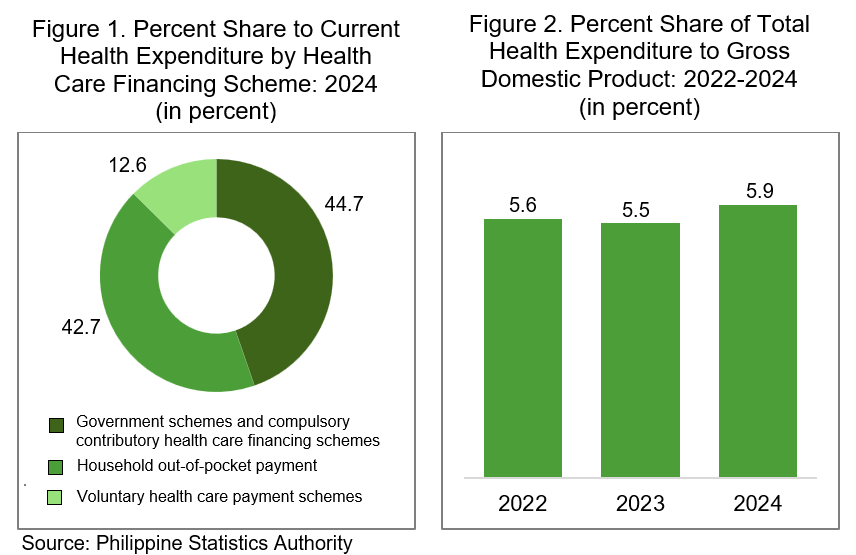The Philippine Statistics Authority (PSA) reveals that the government’s health care financing schemes and compulsory contributory programs were the primary drivers of the nation’s health spending in 2024, accounting for a significant 44.7 percent of the Current Health Expenditure (CHE). This marks a continued trend towards public sector contribution to health care.
The latest figures indicate that the country’s Total Health Expenditure (THE), at current prices, reached an impressive PhP 1.56 trillion in 2024. This represents a substantial 17.1 percent increase from the PhP 1.33 trillion recorded in 2023, underscoring a growing investment in the nation’s health sector. THE constituted 5.9 percent of the Gross Domestic Product (GDP) in 2024.
Following closely behind government and compulsory schemes, Household out-of-pocket payments remained a significant component of health financing, contributing 42.7 percent to the CHE. Voluntary health care payment schemes made up the remaining 12.6 percent.
Current Health Expenditure (CHE) comprised the vast majority of THE, contributing 92.2 percent, while Health Capital Formation Expenditure (HK) accounted for 7.8 percent in 2024. Both CHE and HK experienced increases, with CHE rising by 18.7 percent and HK by 1.7 percent.
On a per capita basis, health spending for Filipinos saw a notable increase, reaching PhP 12,751 in 2024. This is a 17.6 percent rise from the PhP 10,840 spent per person in 2023, reflecting the overall growth in health care costs and utilization.
For the first time, the Philippine Statistics Authority (PSA) has included Primary Health Care Expenditure (PHCE) in its release. In 2024, PHCE amounted to PhP 748.80 billion, showing a 19.2 percent increase from PhP 628.41 billion in 2023. As defined by the World Health Organization, primary health care serves as the initial point of contact for individuals, families, and communities with the national health system. The PSA notes that the methodology for this pilot estimation of PHCE is still undergoing refinement and is considered preliminary.
The robust growth in health expenditure highlights the Philippine government’s commitment to improving health services and the evolving landscape of health care financing in the country.




